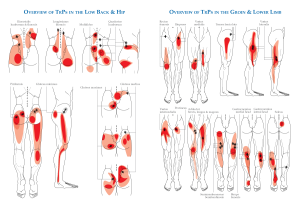What Patients Should Know About Using Inversion Tables At Home

Category: | Author:
An inversion table is a device that allows a person and their spine to get a reprieve from the effects of gravity. These tables are used in spine clinics, physical therapy departments and are even purchasable for use at home, but you shouldn’t just recline on an inversion table for 15 minutes a day and expect your spine to be perfectly healthy. In today’s blog, we share some tips for patients with back pain who are considering using an inversion table at home.
What To Know About Spinal Inversion Tables
The force of gravity weighs heavily on our bodies here on earth, especially on our spine. Your spine is composed of vertebrae that are separated by thin spinal discs. These discs act as shock absorbers for your spine and help to provide some mobility to your spinal column, but they aren’t invincible. Over time, the wear and tear of daily life and natural aging can cause these discs to degenerate a bit. To help take some stress off these discs, many people turn to an inversion table.
By laying on an inversion table and maneuvering so that your feet are above your head, you can depressurize your spinal column. This can help to relieve irritated nerves or simply take some of the stress of gravity off your spine for a short period of time. It can be a fine treatment technique when pursued safely, but it’s not without risks. Here’s what you need to know:
- Not Safe For Some – Because your feet end up over your head, it causes some changes for your body and your heart. Blood pressure increases and your heart rate decreases in this position, meaning it’s not a great idea for patients with blood pressure issues, circulatory problems or anyone with certain eye conditions like glaucoma, as eye pressure also increases in this position. Talk with your doctor before you consider starting an inversion table program.
- Not A Stand Alone Option – An inversion table alone is unlikely to cure your spinal ailment because it is a passive technique that doesn’t address the root issue. It can be a great compliment to a complete spinal treatment program, but it shouldn’t be the only method you are pursuing to take care of your back pain. Oftentimes it is recommended in conjunction with a number of other treatments, like exercise, weight loss, physical therapy, posture improvements and anti-inflammatory medications.
- Not For All Spine Conditions – Inversion therapy is a decompressive technique, which means it can help address compression issues. If you’re dealing with a pinched spinal nerve or a problem caused by spinal inflammation, an inversion table may prove helpful for a bit. However, if you are bothered by something like scoliosis or a spinal fracture, an inversion table won’t help, and it may actually serve to make your discomfort worse.
- Short-Term Relief – Again, it’s important that you pursue other active treatment techniques alongside your work on an inversion table. Many people notice some back pain relief when they are upside down on the table, but oftentimes their discomfort returns shortly after they get off the table. It’s not a great option for long-term back pain relief.
For the right patient, an inversion table can prove beneficial when pursued alongside some more proactive treatments, but you need to have a conversation with your doctor or a spine specialist before you begin your own inversion table regimen. Performed incorrectly or if you’re attempting to treat a condition that will not respond to inversion therapy, you could make your issue much worse. For a better chance of fighting back against your spinal discomfort in the long-term, sync up with a specialist and pursue more widely accepted treatments, like physical therapy, controlled exercise and posture improvements.
For more information about inversion table therapy, or for help with a different spinal issue, reach out to Dr. Sinicropi and the team at The Midwest Spine & Brain Institute today at (651) 430-3800.
Related




